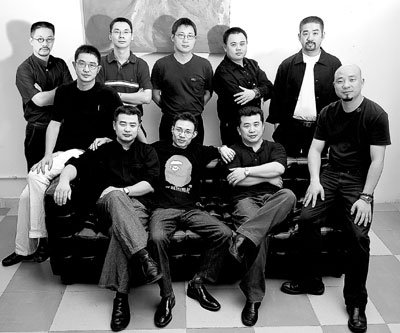|

A TEAM of 10 Shenzhen designers known as BOX10 are organizing a competition called 2012 BOX10 Interior Design for college students at their own expense. This is the third design competition to be organized by the group in five years. To maintain the purity of their art, the group has rejected corporate and government sponsorship of more than 10 million yuan (US$1.54 million).
Raising awareness
BOX10 includes designers Yu Qiang, Li Yizhong, Chen Ying, Zhou Ji, Lin Wenge, Chen Houfu, Hong Zhongxuan, he Xiaoning, Ju Bin and Qin Yueming, all pioneers in their field in Shenzhen. They have all participated in prestigious interior design competitions at home and abroad. The awards and medals they have won include Asia Pacific Interior Design Awards, and a gold medal at the Chinese Interior Design Biennial Exhibition.
Because their interests and professional goals are similar, the young designers first collaborated in May 2004. “We are a small nongovernmental group with some influence. We hold activities from time to time to make people aware of the beauty of life.” Chen Ying, the first rotating president and one of the founders of BOX10, explained. They have never considered applying to register with the government. They want their pursuits to be solely about art.
“Most people’s understanding of interior design is still limited to the idea of decoration. We want to let people know more about the art form,” Chen added.
The desire to make a statement about interior design in Shenzhen has spurred them to hold their first exhibition, Shenzhen·Designer·Us — A Group Exhibition of 10 People in 10 Years, in April 2005.
In another exhibition Brands and Designers China Initiatives, one of their works — 10 cubic boxes with their signatures on the surfaces — attracted wide attention. They were nicknamed BOX10 by the Italian designers in the neighboring exhibition area.
Using competitions to make a statement
Soon after their first exhibition, the members of BOX10 realized that holding exhibitions would not be enough to get their message across. A conversation with Zhou Ming, a professor from Shenzhen University, inspired Chen to hold space design competitions on campus.
In 2007, the first BOX10 Shenzhen 10 People·Space Design Competition was organized by the group in collaboration with the College of Design of Shenzhen University. Three years later, the same competition was held again. The range of participants has been expanded to more universities throughout the country.
With the success of the previous trials, the third design competition is about to begin. A new sub-theme “Orient” has been added under the theme of “re-creating the space within cubic box.”
Designers are required to present a creative space no larger than 10m×10m×10m. The theme will also become part of the curriculum in the second semester at universities which are taking part. Designers from BOX10 will have the chance to exchange ideas with college students as professors.
“As frontline designers, we offer the opportunity for students to practice design, which will benefit their future development,” said Zhou Ji, one of the BOX10.
Untainted funding for untainted dreams
Unlike common competitions that rely on government subsidies and commercial sponsorship, all the expenses of the three competitions were covered by the 10 designers. According to Chen, a sponsor once expressed his interest in providing a large amount of money to fund the competition, but was rejected by them.
“We are not willing to see our ideas tainted by commerce. Spending our own money gives us the autonomy we need. Each of us can afford to pay 20,000-30,000 yuan to fund the competition,” Zhou commented.
(Tan Yifan)
|

